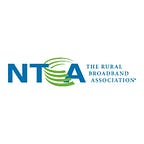Volunteer Potatoes and the Sneaker Net
By Josh Seidemann, VP of Policy NTCA — The Rural Broadband Association
Imagine an enemy that infiltrates a civilian population. Imagine that adversary is nearly indistinguishable from the friendly natives. Imagine a special forces deployment charged to identify and eliminate the enemy and a mandate to minimize to the greatest extent possible civilian casualties. Imagine these special forces must be able to withstand rain, humidity, and extreme temperatures. Imagine these forces must spot, identify, and eliminate the adversary in about 250 milliseconds.
Welcome to the world of smart ag and the volunteer potato.
If you thought smart ag was about GPS-guided tractors, robotic milking machines and block chain for romaine lettuce, think again. In two blinks of an eye (the average human blink lasts about 100 milliseconds), robots, deep learning and cloud computing can help eliminate adversarial spuds threatening a sugar beet crop.
In many instances, sugar beets follow potatoes. A mild winter may fail to eradicate residual potato plants, which the following season may grow to crowd out sugar beets. These unwanted tubers are called “volunteer potatoes.” Early intervention is advised since the faster-growing potato plants can deprive sugar beets of sunlight and nutrients.
In a Dutch pilot, a robot was deployed to roam the fields and photograph emerging plants. These images were uploaded to the cloud and compared to a library of approximately 6,000 images of potato and beet plants at various stages of growth and in various settings. If a volunteer potato was identified, the robot sprayed it with a broad-spectrum herbicide. The entire process takes about 250 milliseconds — 20–25 milliseconds for the communications between the robot and the server, and about 200–225 milliseconds for processing. Problem solved, and you can look forward to sugar beet pancakes.
But we know that precision ag is about more than sugar beets. In fact, corn and soybeans accounted for more than 40% of U.S. crop receipts in 2018 (about $70.5 billion).Smart ag there includes GPS guidance that enables tractors to drive in a straight line. I know — you’re eye-rolling, “So?” Well, since we started this post with some imagining, now imagine that without GPS guidance, every time you turn your tractor to plow another row, you’re driving just a little crooked while you try to manage a 25–30 foot boom to keep it 18” from the neighboring row. And now, we’ll stop imagining, because we can point to findings that demonstrate an impressive five-percent yield increase in crops when you drive in a straight line.
And this is where the need for robust broadband in rural and agricultural regions becomes even more apparent. The potato/sugar beet pilot relied upon speeds of about 125 Mbps upload to send images to the cloud. Similar processes have been applied to corn crops. Mobile sensors can monitor plant status; soil texture; moisture; presence of weeds; and respond on-the-go to apply pesticide and/or fertilizer as needed. Yield monitors can measure crop yield as a function of biomass flow or weight as harvesters operate. The nearly-instant transmission of these data to the cloud offers two benefits: (1) it enables real-time responses and (2) it obviates the need to download data later on thumb drives for the “sneaker net” (i.e., the prosaic errand of walking memory sticks from building to building and device to device). It also enables accurate and organized observation of trends that can inform year-over-year strategies to enjoy efficiencies and increased yields.
Broadband investment. Larger yields. Economic gains. That sounds smart to me.
